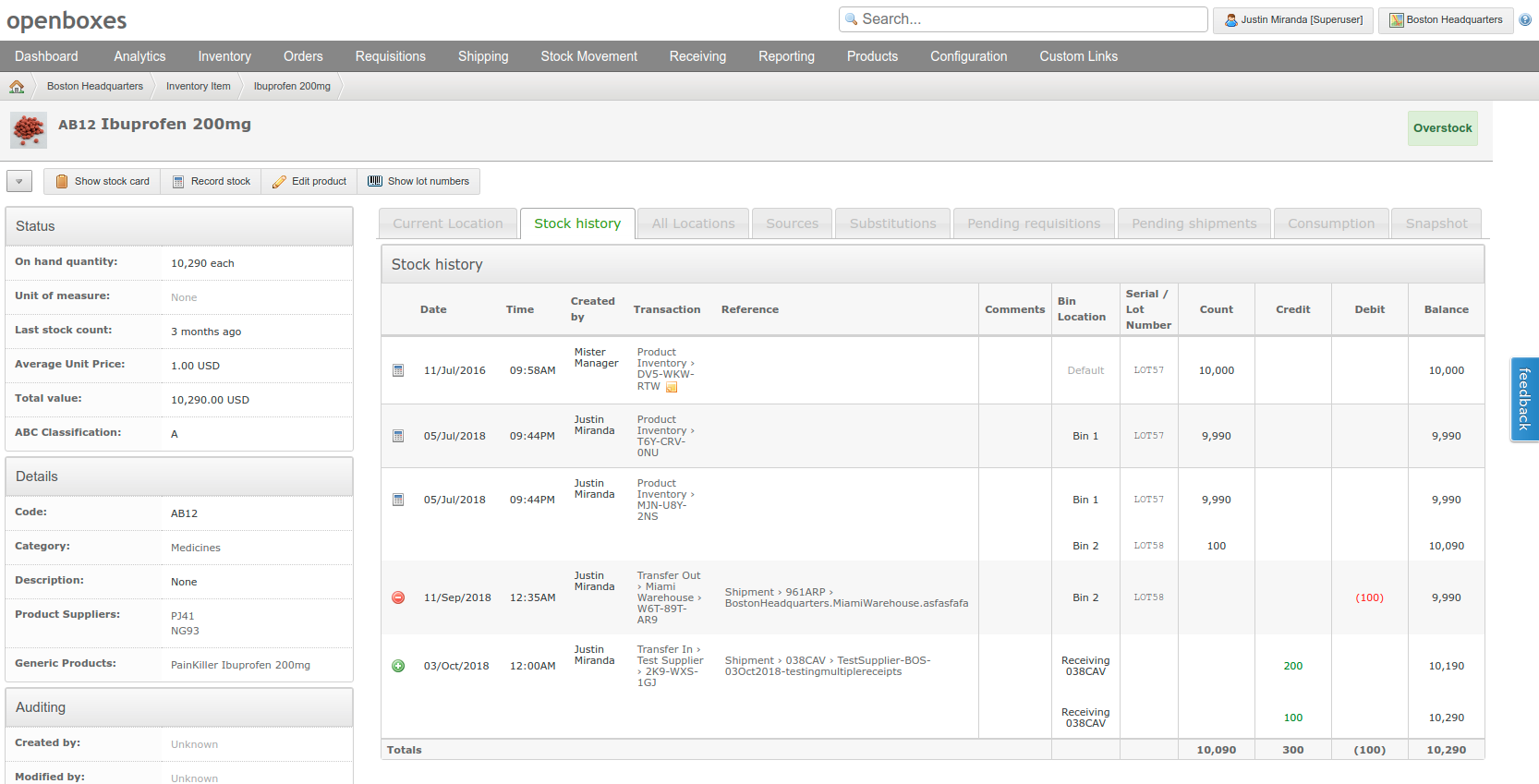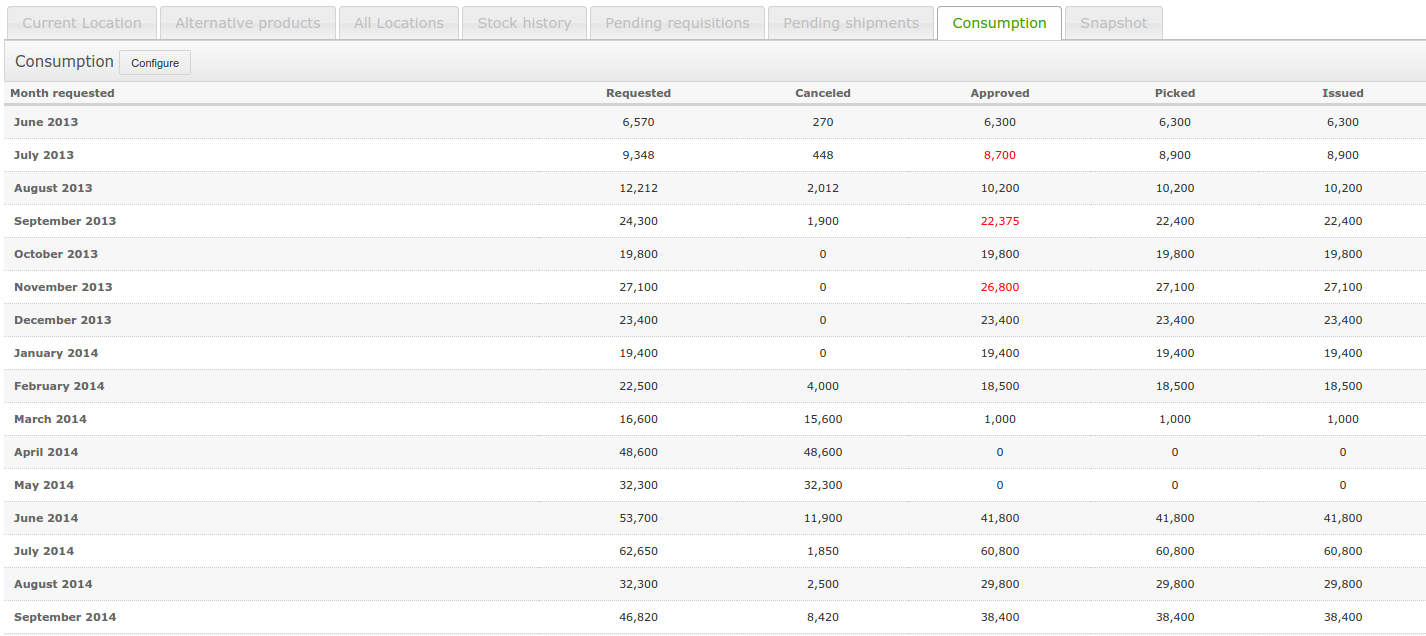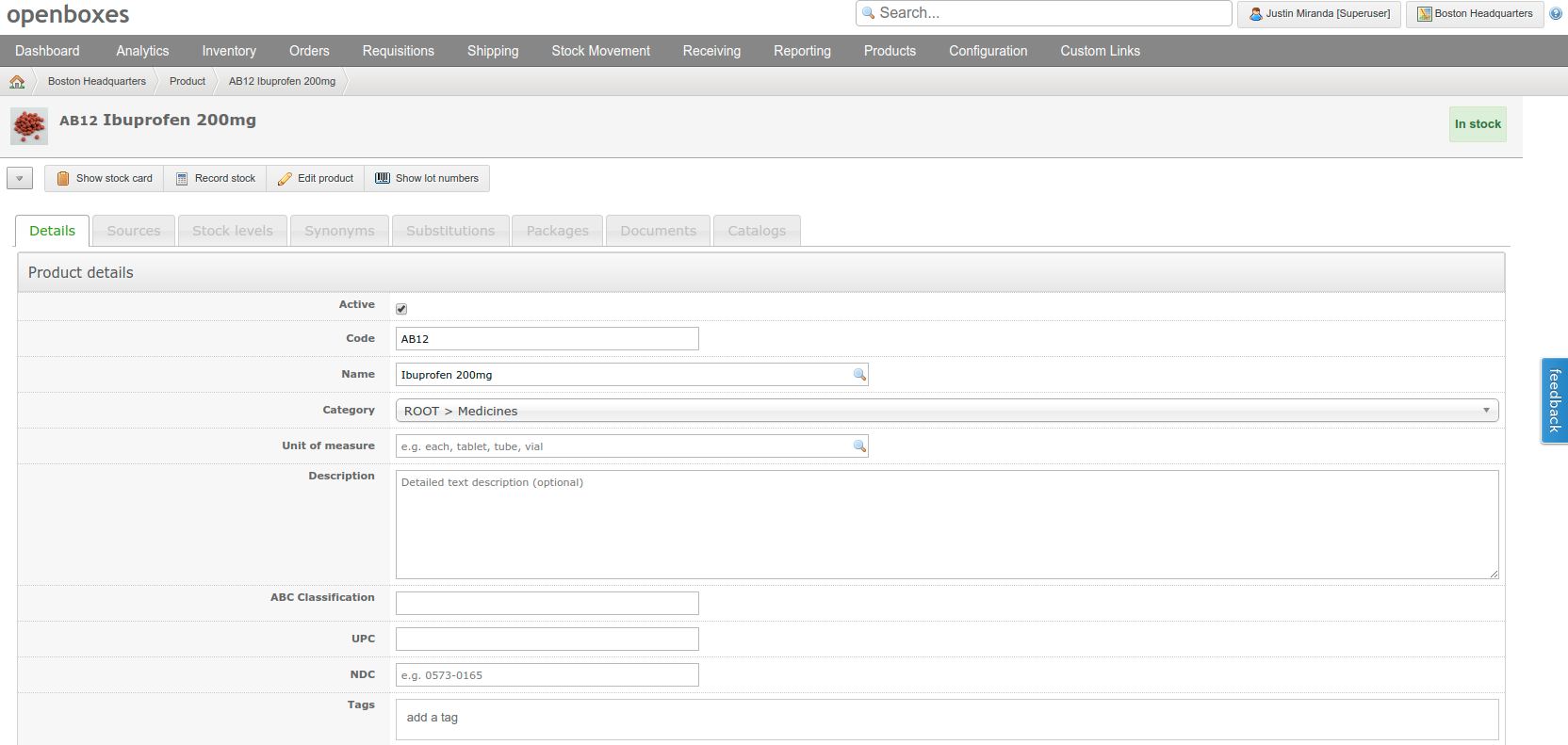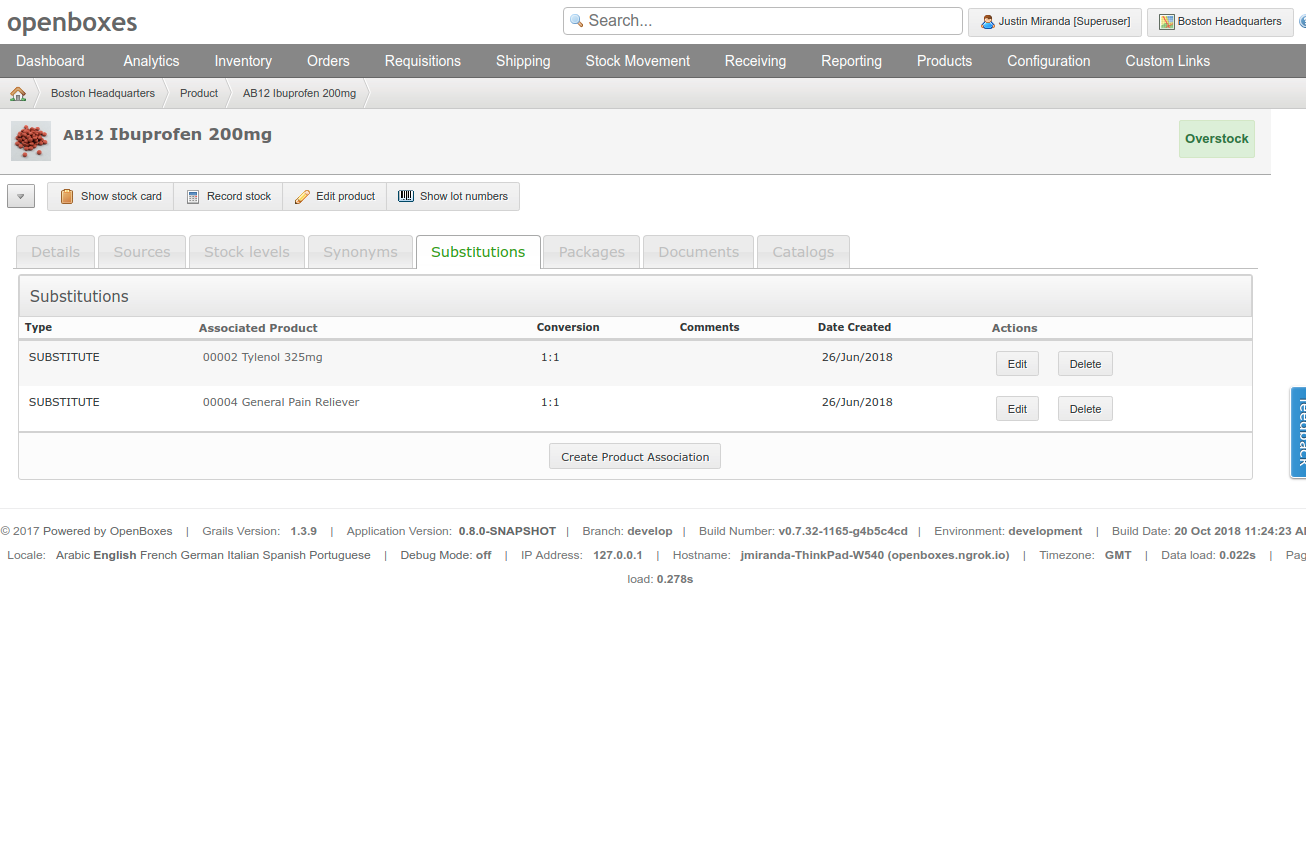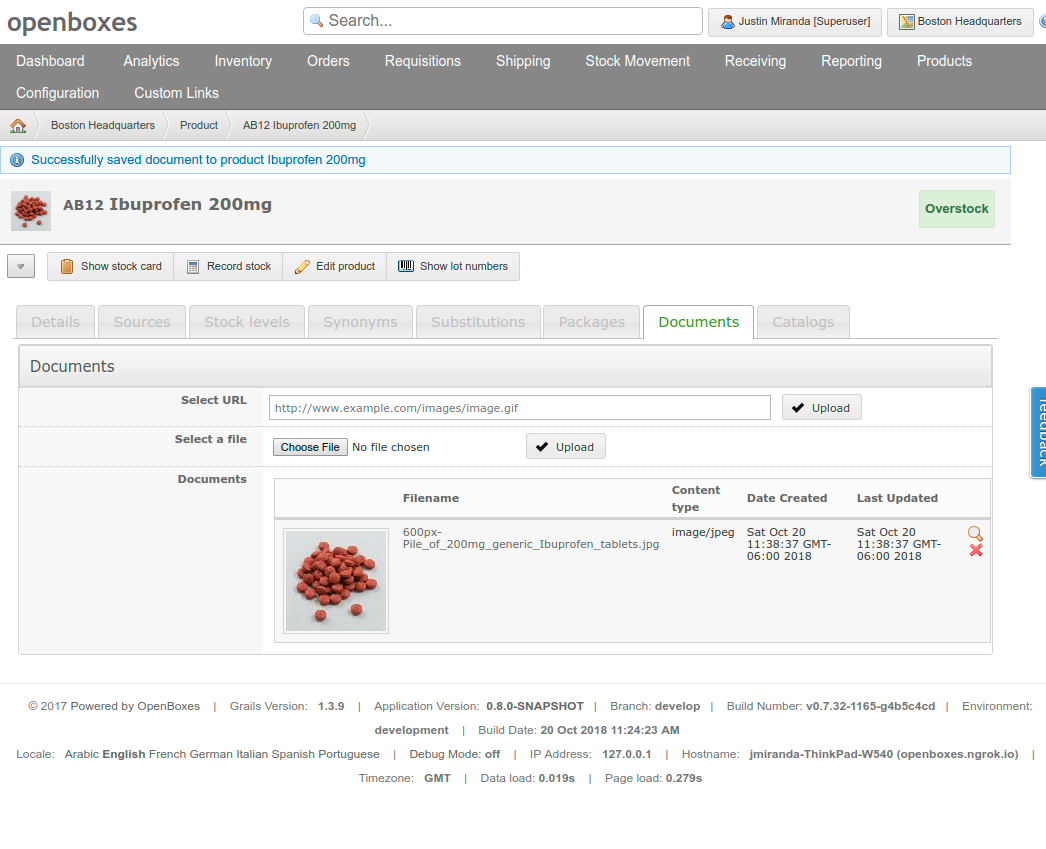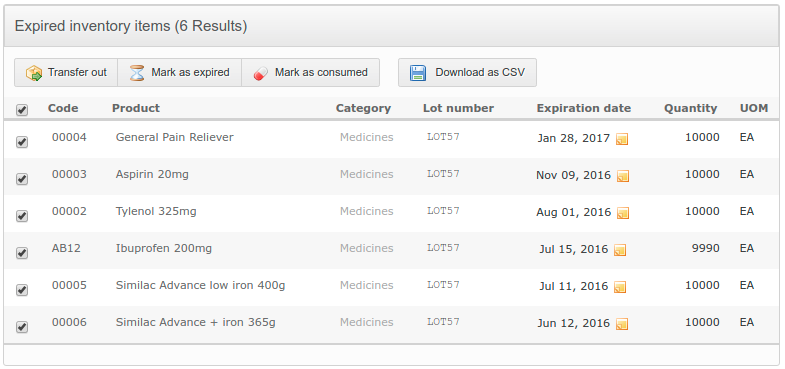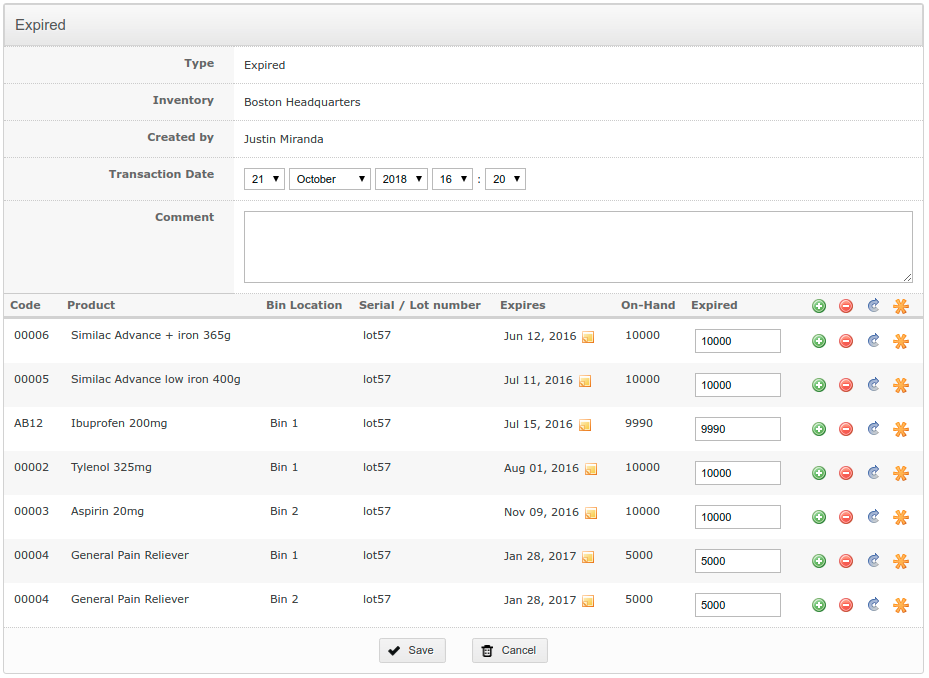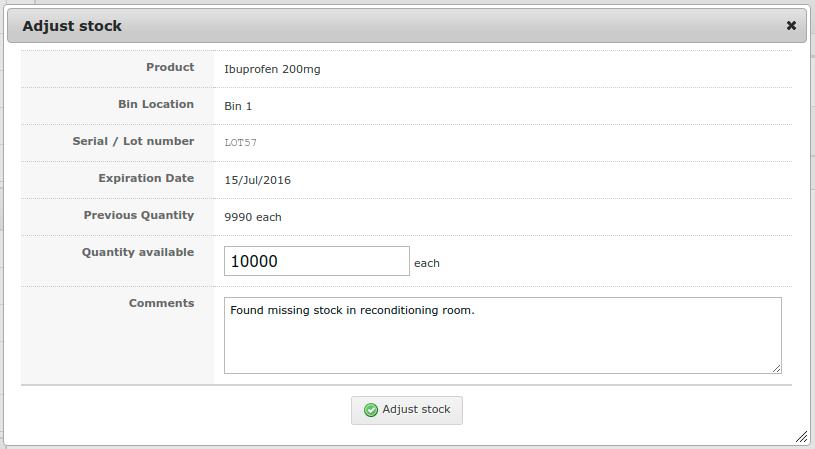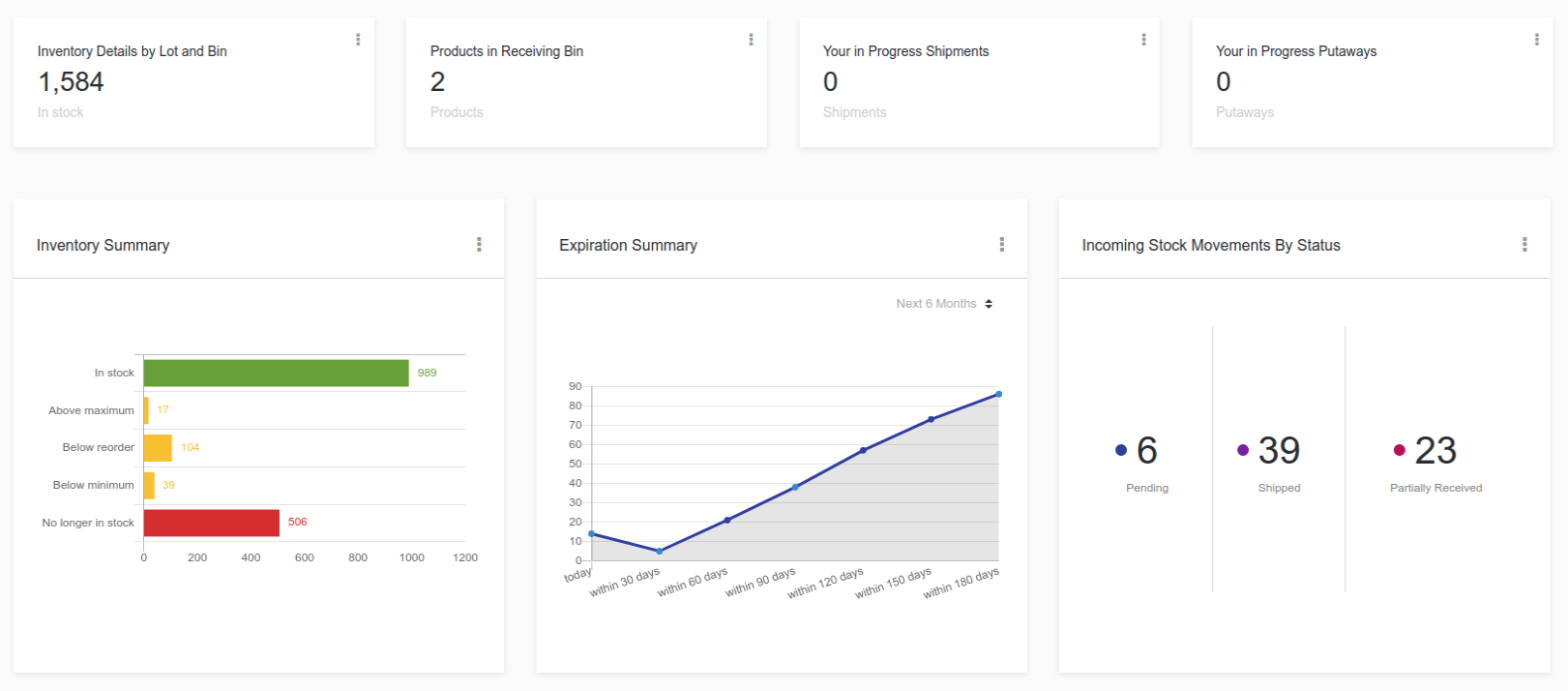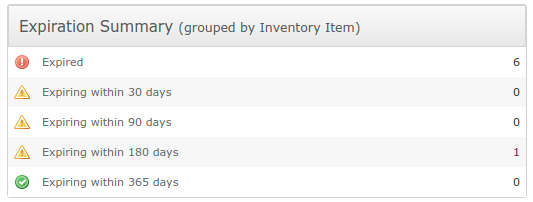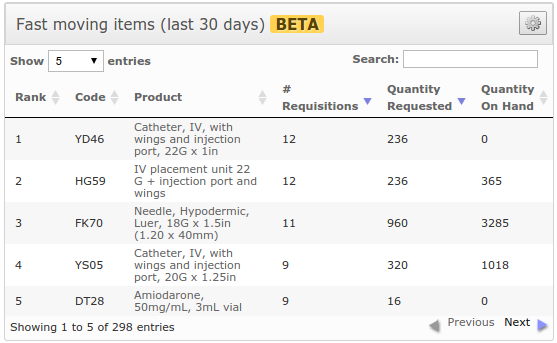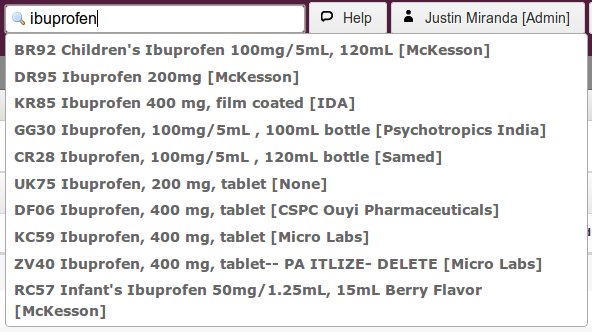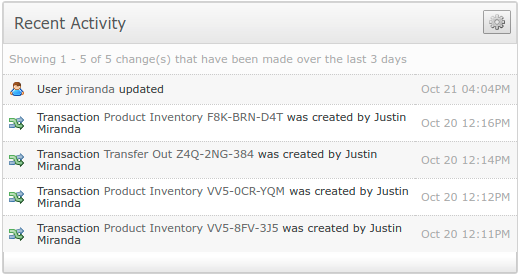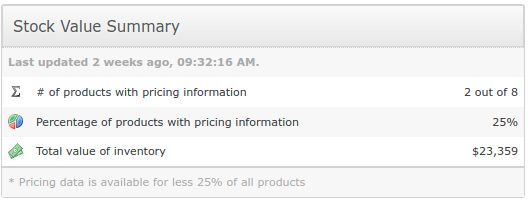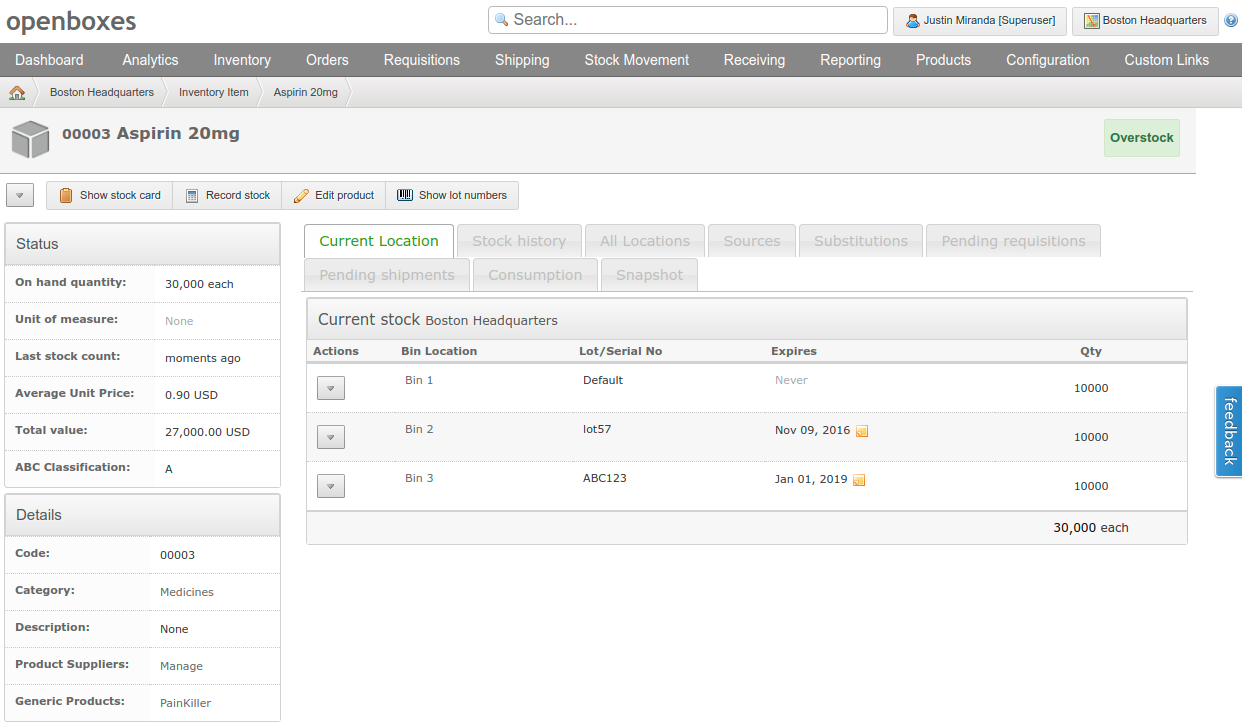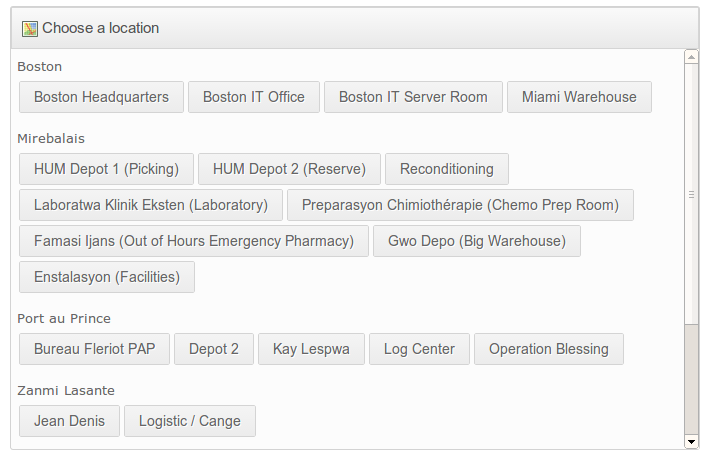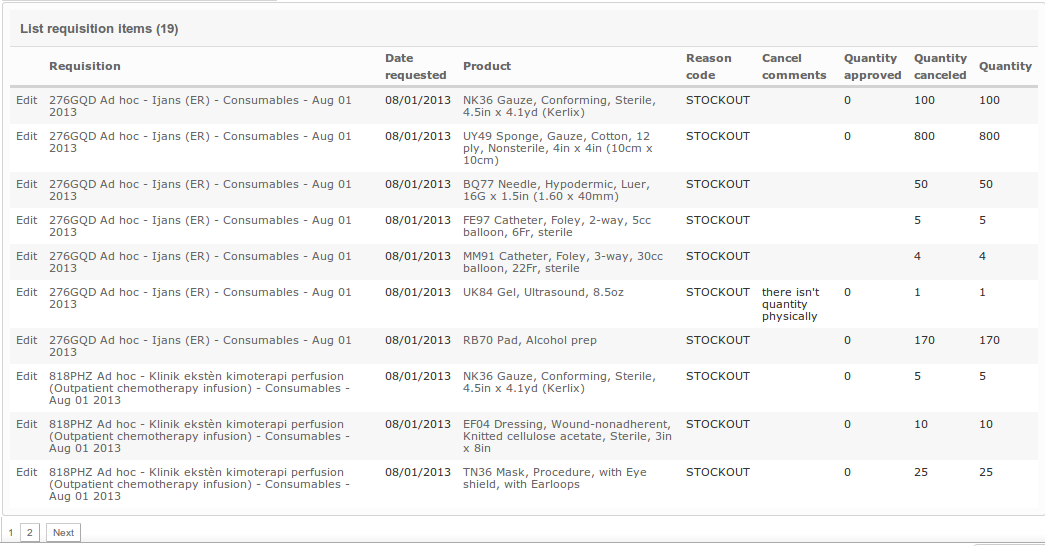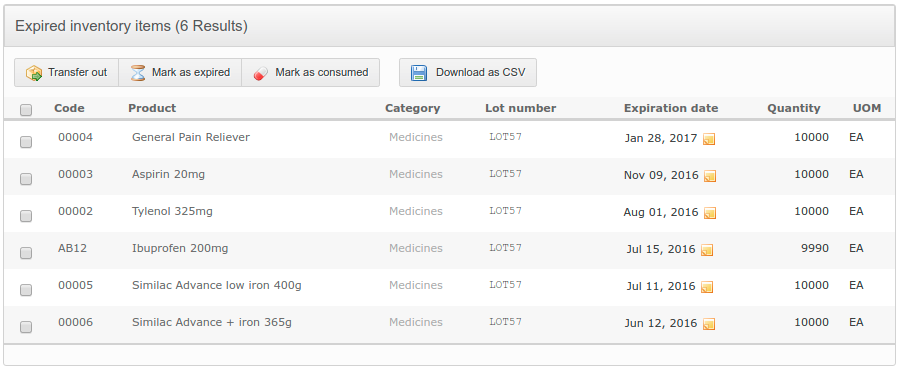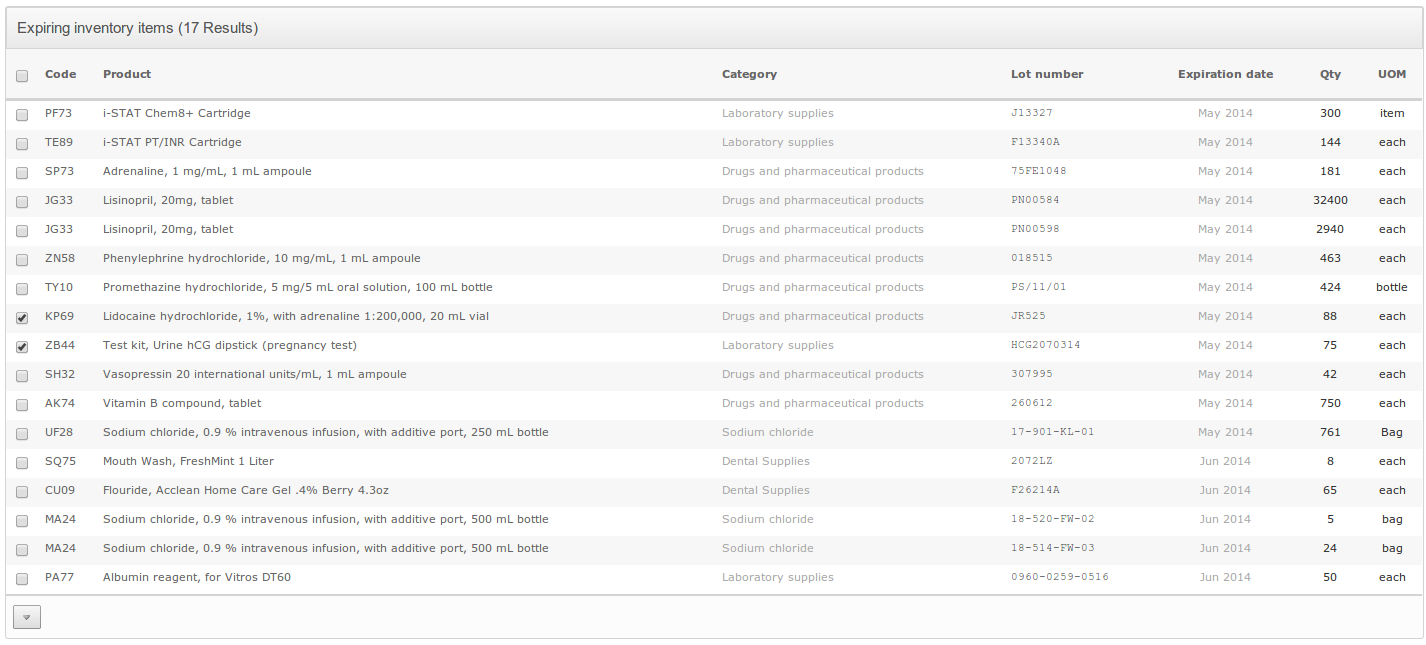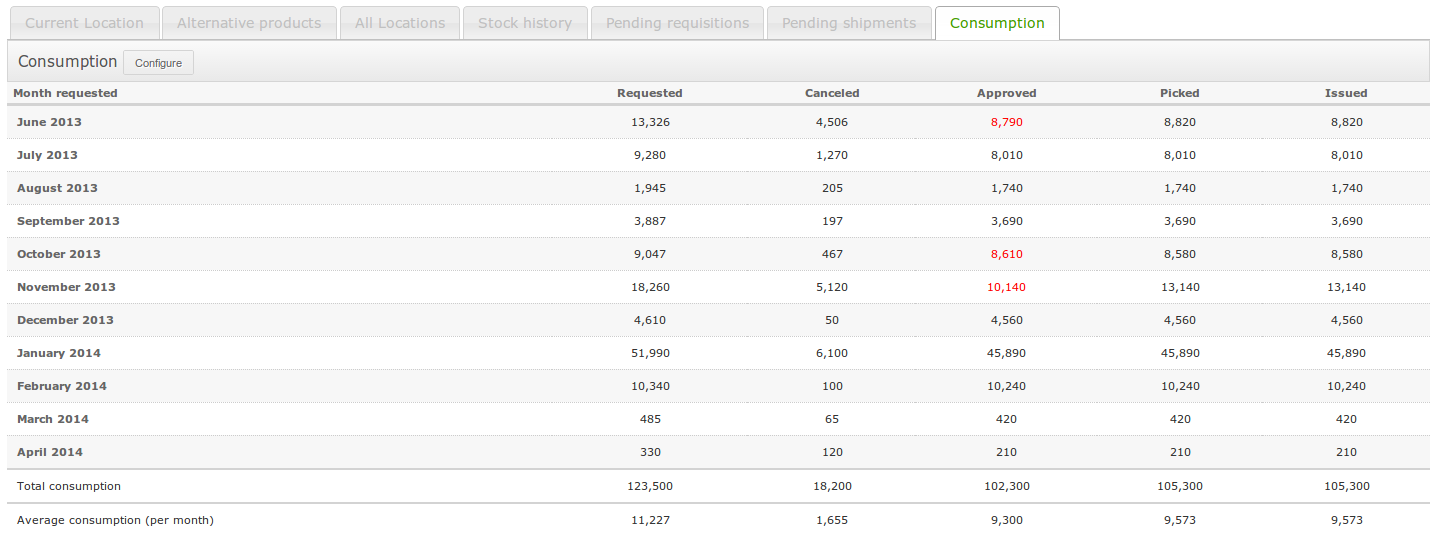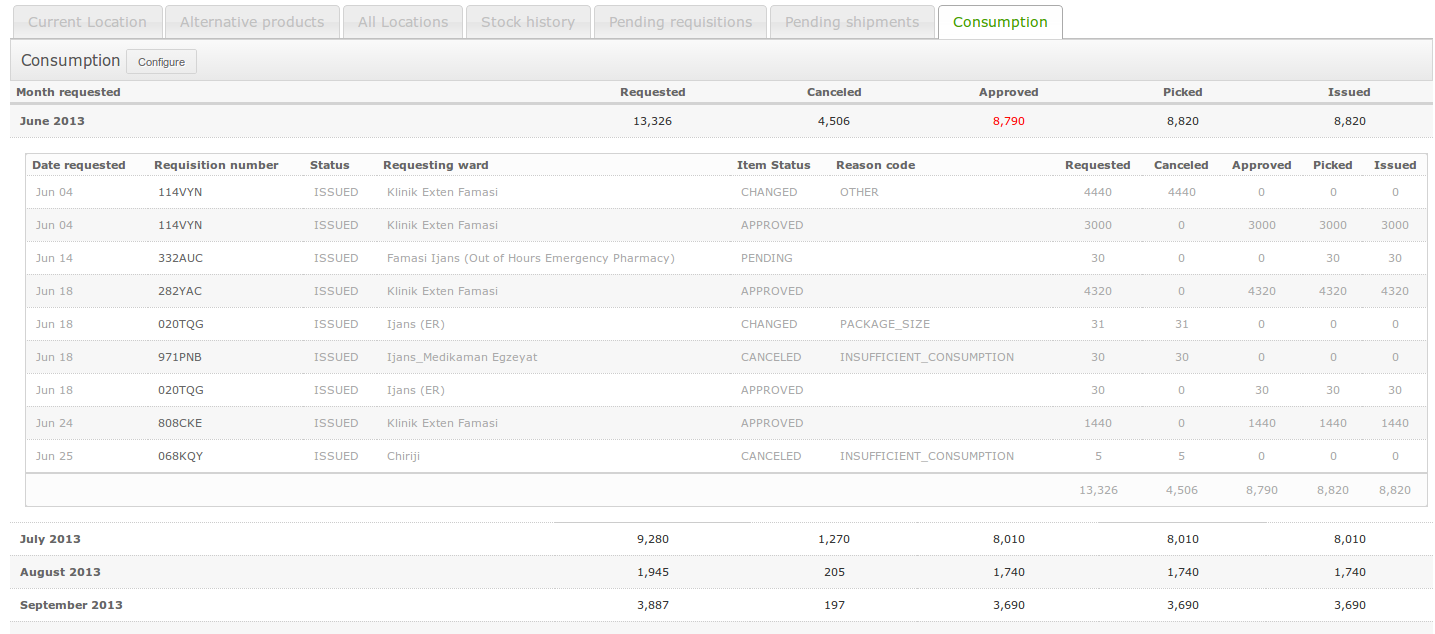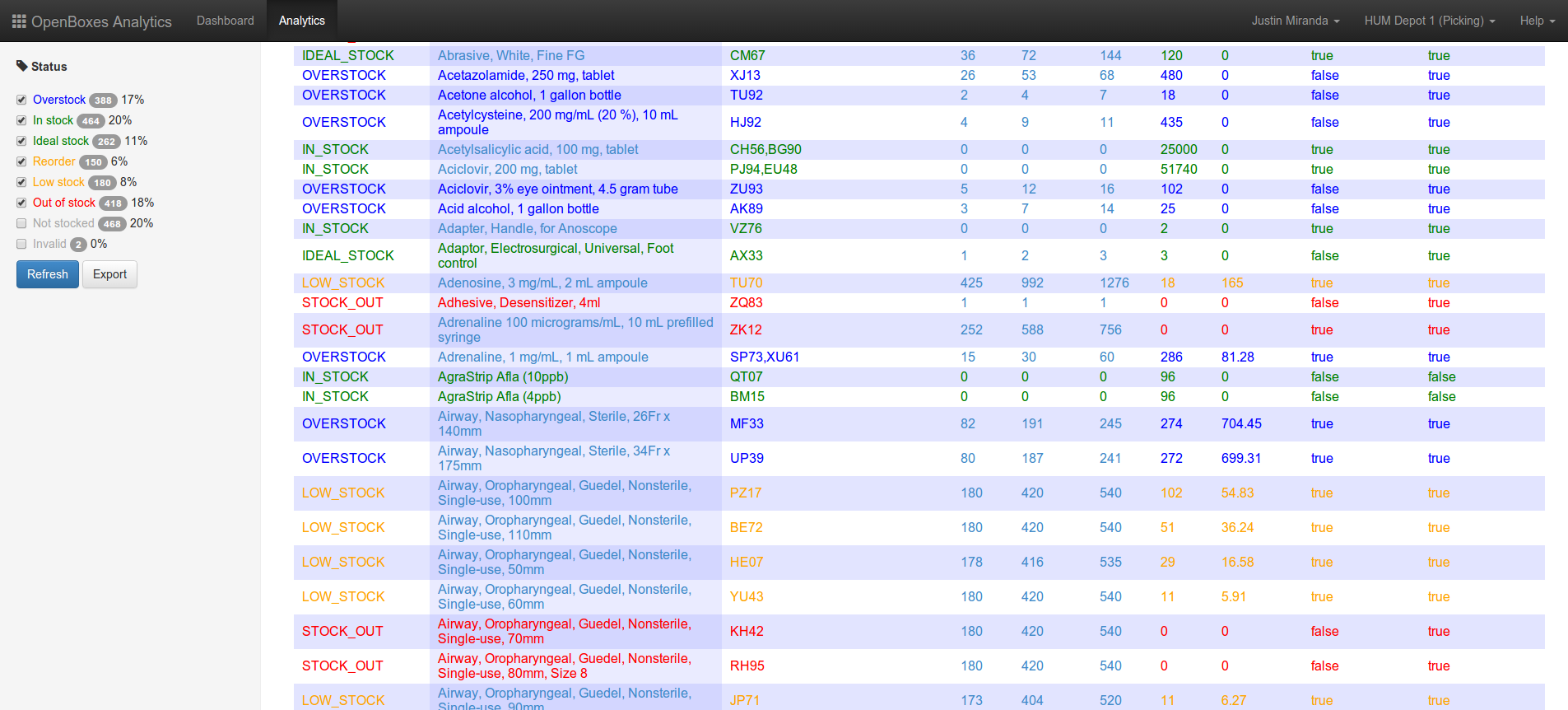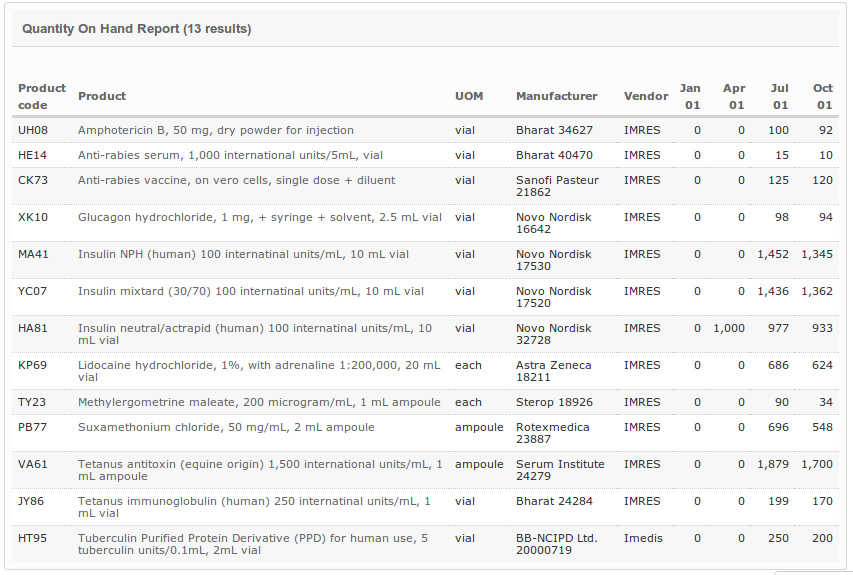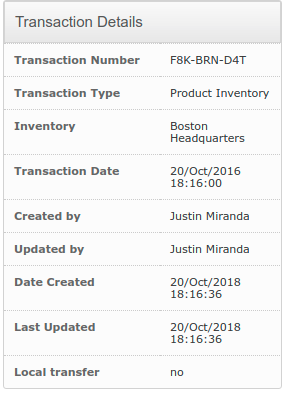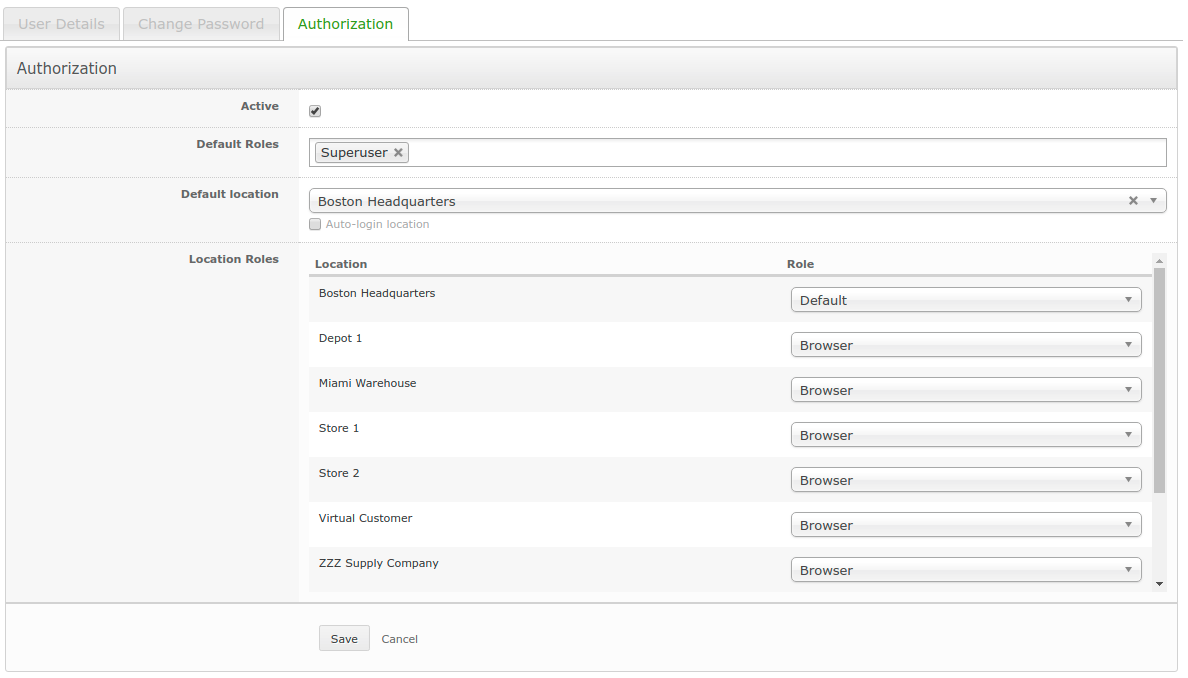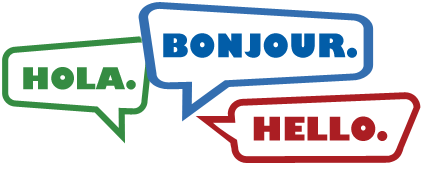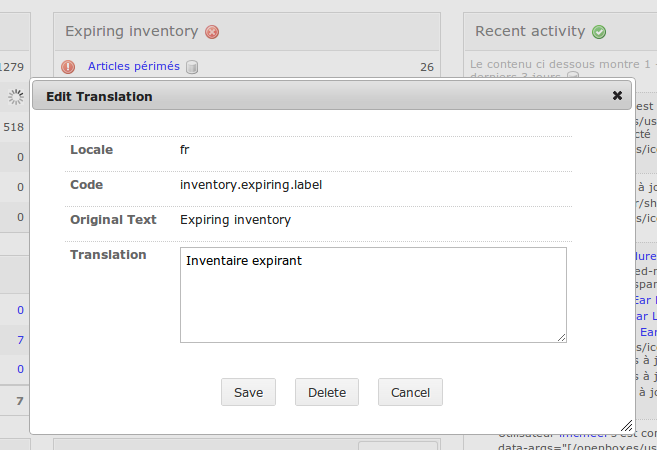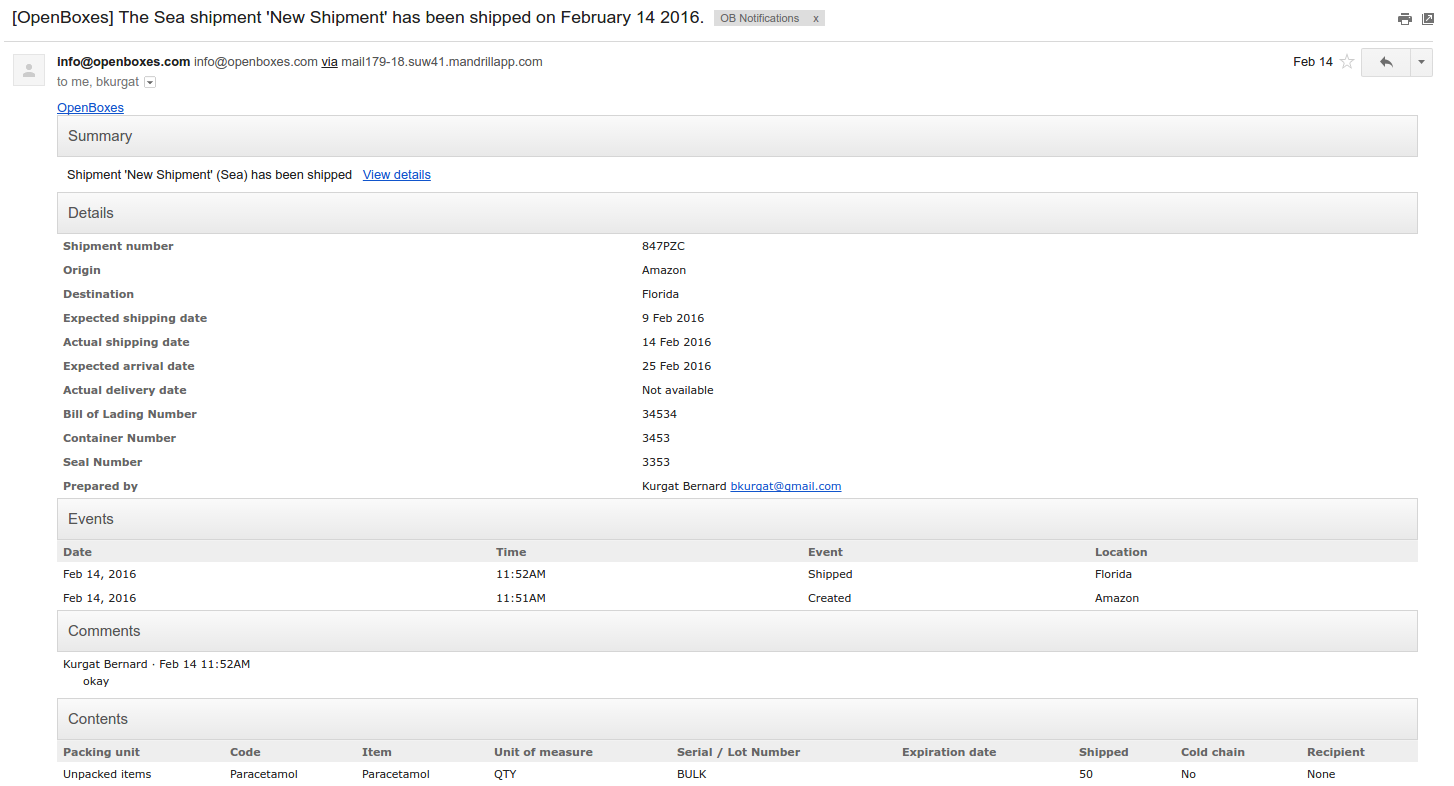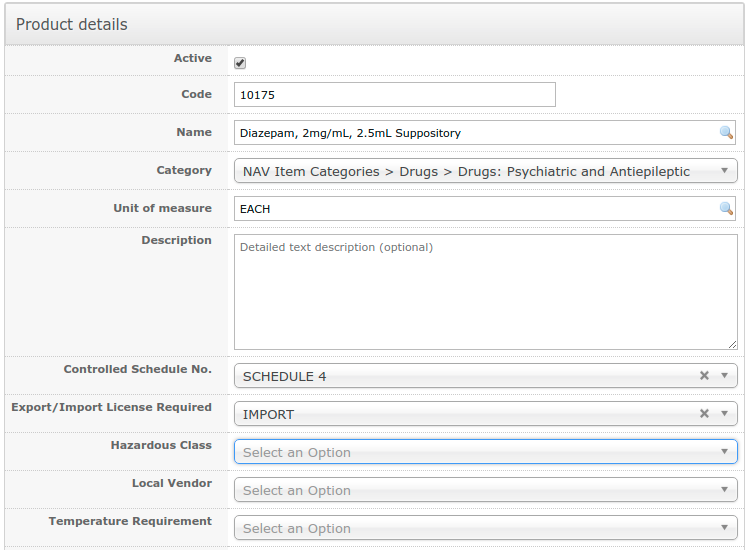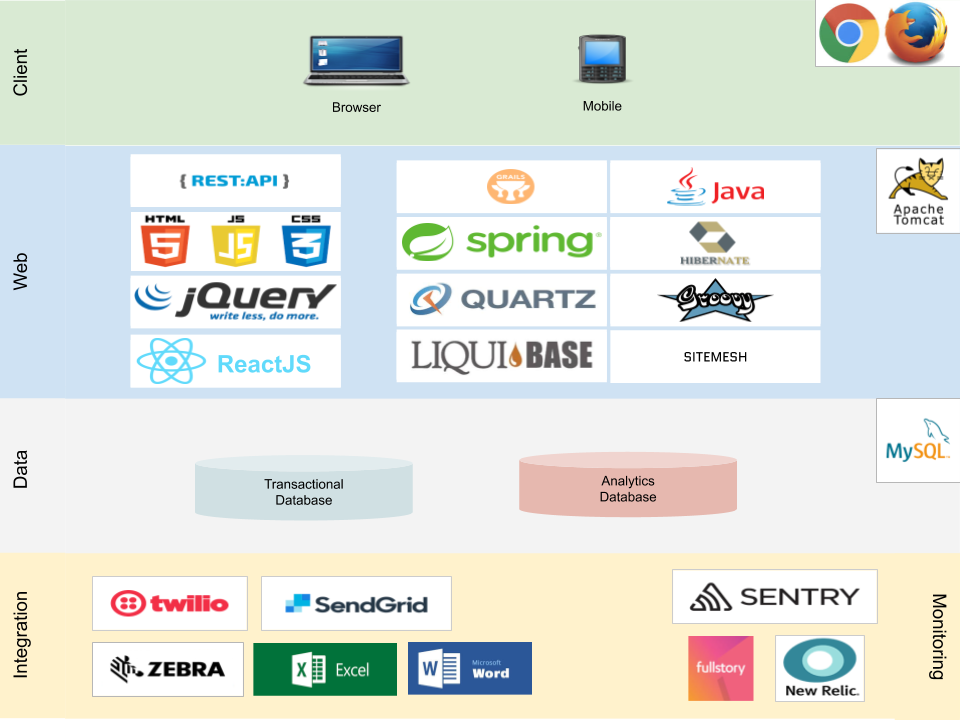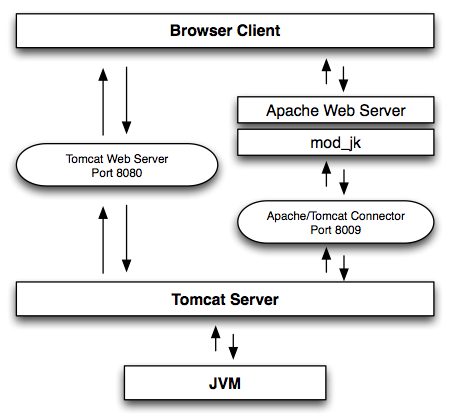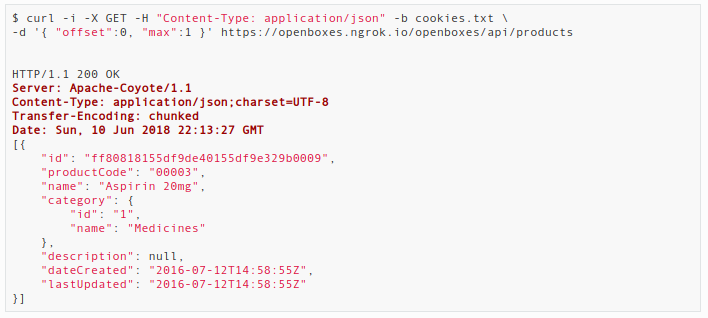Inventory Management
Manage inventory at multiple levels: bin location, product, lot/serial number, and expiration date
- Manage multiple facilities across multiple regions
- Manage bin locations and bulk storage areas within each storage facility
- Make adjustments to quantity and bin location during inventory activities
- Track reasons for adjustment (i.e. expiry, damage, loss)
- Export suggested cycle count for each location based on last inventory date
- Remove quantity from inventory due to expiry, damage, or recall
Stock Card
OpenBoxes supports any type of item including, but not limited to, medications, medical supplies and devices, office supplies, and building materials. In addition, the software can be used to track the location of fixed assets like automobiles, IT equipment, and hospital furniture.
- Store metadata about each item, including cost, suppliers and manufacturers, category/classification, and substitutions.
- Create custom attributes for temperature requirements, hazardous material class, and import/export requirements (e.g. for controlled substances).
- View quantity on hand within each inventory location by bin location, lot/serial number, and expiration date
- View stock history including debits, credits, and inventory adjustments
Stock Movements
Intuitive workflows to manage movement of stock from a supplier to depot, from depot to depot, and from depot to consumption location.
- Ability to base a stock movement on a preset stock list (i.e. monthly replenishment)
- Ability to edit quantity in stock movement based on availability of stock
- Ability to keep track of original request to inform forecasting
- Ability to act on suggested substitutions during stock movement workflow
- Automated picking based on first-expiry-first-out (FEFO) algorithm
- Ability to export and print picklist
- Ability to pack items by pallet and box
- Ability to add stock movement metadata including date, tracking number, comments
- Ability to export packing lists and customized customs clearance documentation
- Ability to upload and store other documentation
Inventory Tracking
Adjust inventory quantity and remove quantity due to expiry and damage.
- Track lot/serial number and expiration date through workflows, including automation based on FEFO during picking
- Easily identify affected inventory in the event of a recall
- View and export dashboard reports on expiring stock
- Access information about incoming shipments and pending outgoing shipments for each item by location
Flexible Location Hierachy
Organize and manage stock within multiple facilities, thousands of bin locations, receiving and staging area, supply closets, etc
- Location Groups (geographic region)
- Location (facility, storage area, room, closet, locked cabinet, crash cart)
- Internal locations (bin location, receiving area, staging area, cross-docking, bulk storage)
Security
Assign permission levels by role
- Auditing of user actions, includes automatic created & updated timestamps for all major transactions
- Multiple roles available (Superuser, Manager, Read-only)
- User access can be restricted by location
- Ability to authenticate using directory service (i.e. LDAP)
- Configuration of user roles and permissions (coming soon)
Flexible Deployment Options
OpenBoxes is a web-based system that can be hosted in the cloud or on-premise; there is no need for a license, so there is no limit to the number of simultaneous users
- Web-based system that can be hosted in the cloud or on-premise.
- Requires consistent internet connectivity for cloud-based system
- Requires human resources and hardware to support on-premise system with offline capability
- There are no limits to the number of users who can use the system at one time
- There are no limits to the number stock locations you can manage
- Can be accessed from mobile devices
- Can be integrated with third-party software systems through REST API (as of v0.8.0).
- Can be integrated with barcode scanners and RFID receivers
REST API
Build your own mobile app and integrate with third-party systems using our REST API.
- Uses standard HTTP GET, PUT, POST and DELETE methods
- Supports JSON input and output
- Basic Authentication leaves much to be desired (Bearer Token, OAuth 2.0, JWT coming soon)
- Check out our REST API docs for more information.






